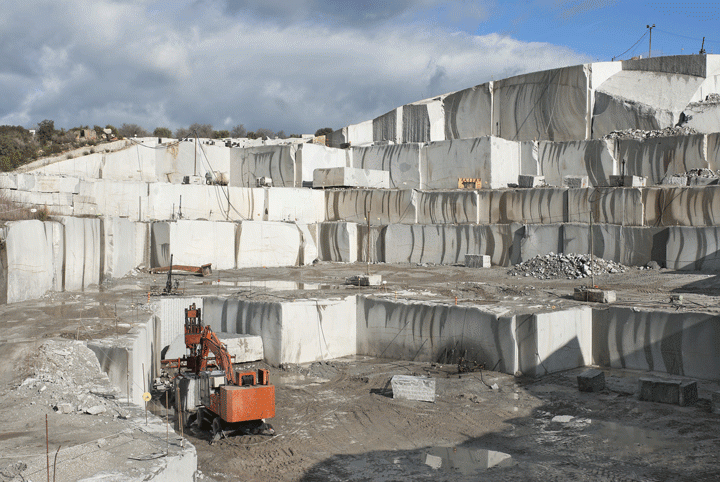Travelling Via Granite Quarries in South Africa: A Visual Odyssey
Travelling Via Granite Quarries in South Africa: A Visual Odyssey
Blog Article
Revealing the Mysteries of Granite Quarrying: Where Toughness and Elegance Meet
The world of granite quarrying is a realm where the raw toughness of nature merges with human artistry to develop structures that stand the test of time with an air of sophistication. From the midsts of quarries to the meticulous polishing in workshops, the process of transforming granite right into building wonders is an intricate dancing of tradition and advancement. As we peer right into the depths of this ancient craft, we begin to discover the surprise intricacies that shape the very essence of our built setting.
The Origins of Granite Quarrying
In the annals of architectural history, the origins of granite quarrying are shrouded in a tapestry of old workmanship and geological marvels. Dating back to ancient Egypt and Mesopotamia, the extraction of granite from quarries marked the start of a trip that would eventually lead to the creation of some of the globe's most iconic frameworks.
Granite quarrying's origins can be mapped to the skilled artisans that acknowledged the stone's toughness and visual charm. Through a combination of primitive devices and large resolution, these early quarry workers unearthed granite blocks that would certainly become the foundation of civilizations.
As human beings advanced, so did the methods of quarrying granite. The Romans, renowned for their engineering prowess, created innovative techniques for drawing out granite to construct monoliths, holy places, and roadways that stood the examination of time.
The legacy of these old quarrying techniques continues to shape modern-day design, with granite staying a symbol of toughness and sophistication in construction tasks around the world. (granite quarries in south africa)
Tools of the Quarrying Profession
The development of granite quarrying techniques from old worlds to modern times highlights the essential function played by the tools of the quarrying sell shaping the market's practices. In old times, quarrying tools were rudimentary, usually consisting of knives, hammers, and wedges made from materials like bronze or iron. These devices needed significant manpower and time to remove granite obstructs from quarries.

In addition, the introduction of pneumatically-driven devices and high-powered equipment has actually dramatically lowered the physical labor called for in quarrying procedures, boosting employee safety and productivity. As the quarrying industry proceeds to introduce, the devices of the trade remain at the forefront of driving progression and forming the future of granite removal.
Drawing Out Blocks of Granite
Utilizing precision equipment and progressed strategies, the removal of granite blocks from quarries has come to be an innovative procedure in the modern quarrying industry. The first action involves recognizing the area and size of the granite down payment to determine one Click This Link of the Bonuses most effective extraction approach. When a suitable website is chosen, the extraction procedure begins with the drilling of holes for the positioning of dynamites. Controlled blowing up techniques are after that utilized to disintegrate the granite right into manageable areas.

Sprucing Up and Completing Techniques
To achieve a perfect surface area on granite blocks, competent craftsmens employ a series of thorough polishing and finishing methods. After the first extraction and forming processes, the granite blocks undertake a comprehensive sprucing up stage to enhance their natural appeal and longevity.
Along with polishing, completing strategies are related to further fine-tune the granite's appearance. These methods might consist of flaming, honing, or brushing, each offering distinct structures and coatings to match various visual preferences. Flaming, as an example, includes subjecting the granite surface area to heats to create a rough, textured surface, suitable for outside applications where slip-resistance is crucial. Sharpening, on the other hand, provides a matte finish that is smooth to the website link touch, perfect for indoor countertops and flooring. By thoroughly selecting and applying these brightening and completing methods, artisans can transform raw granite blocks into beautiful pieces that showcase both strength and elegance.

Ecological Impact and Sustainability
With the growing focus on environmental awareness in the sector, granite quarrying methods are significantly scrutinized for their effect on natural deposits and long-lasting sustainability. Quarrying for granite can have significant environmental effects. The removal process typically entails making use of heavy equipment, explosives, and large quantities of water, bring about habitat destruction, dirt disintegration, and water air pollution. Additionally, the transportation of granite from quarries to refining centers produces carbon exhausts, further adding to environmental deterioration. granite quarries in south africa.
To reduce these effects and make sure sustainability in granite quarrying, market stakeholders are taking on numerous actions. Applying innovative modern technologies to lower power intake and water usage, recovering quarried land for environmental remediation, and promoting responsible sourcing practices are some strategies being used. Certifications such as the Woodland Stewardship Council (FSC) and the Management in Energy and Environmental Design (LEED) aid consumers determine environmentally friendly granite products.
Verdict
Finally, granite quarrying is a procedure that calls for specialized tools and methods to essence blocks of granite and brighten them to a high degree of finish. While the environmental influence of quarrying can be considerable, efforts are being made to enhance sustainability practices in the market. Overall, granite quarrying is a fragile balance in between utilizing the toughness and sophistication of this natural rock while minimizing its influence on the environment.
Report this page